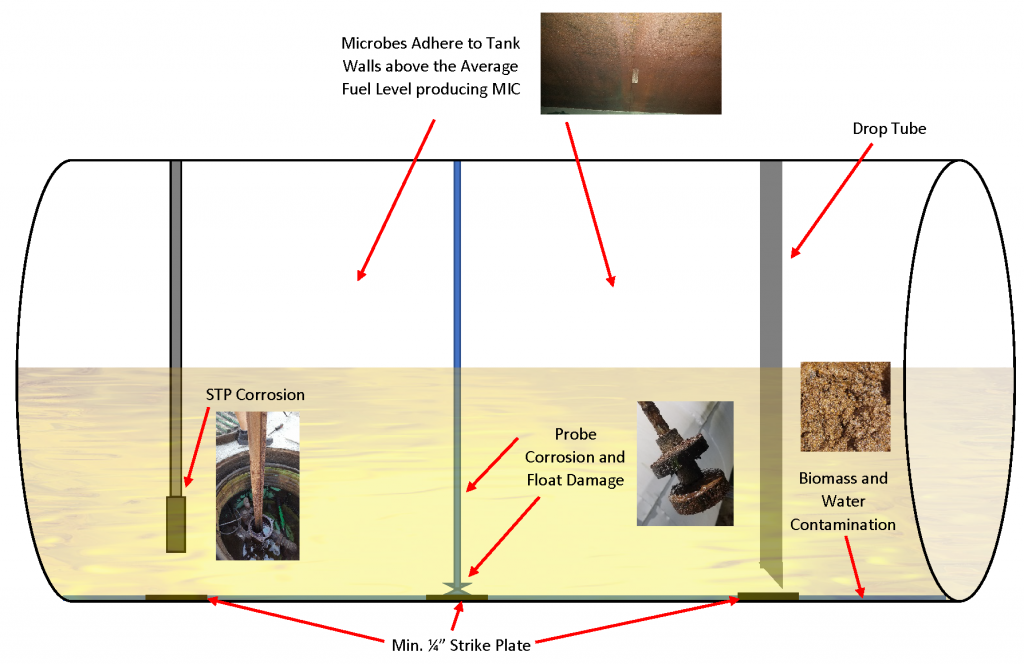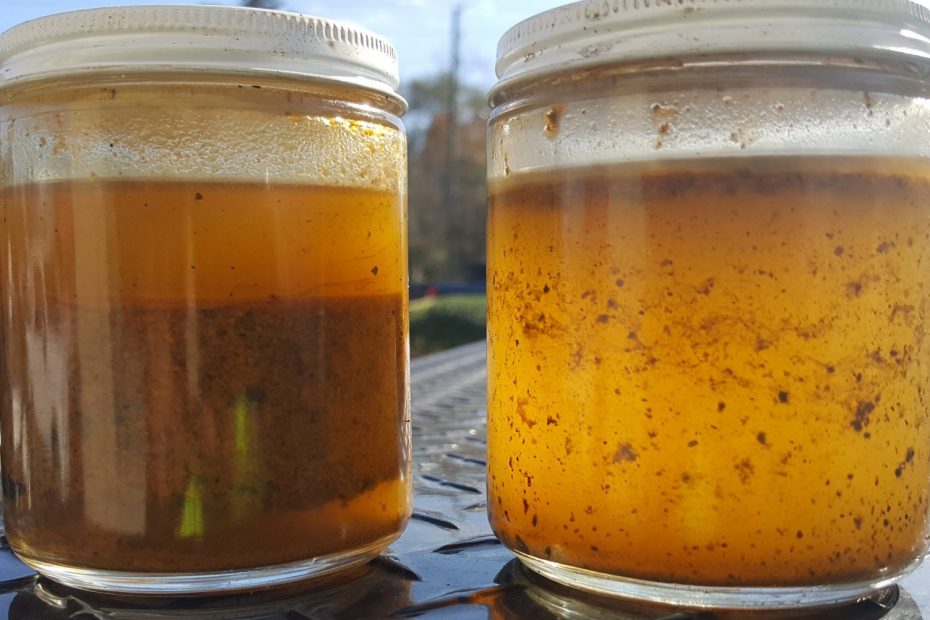In the last post, I made the comment that microbes work together. There is no truer statement when referring to fuel and fuel systems. There are over 1 million known microbes today and an estimated 16 billion unidentified microbes. Fact – microbial communities comprising many species are likely infecting your fuel and fuel systems. How they interact with the environment and each other determines in large part the damage they can and will do. There are several factors that affect microbial growth.
5 factors affecting microbial growth
- Water available
- Oxygen level
- Temperature
- Nutrients available
- Environmental pH
Water, including condensation, is the major contributor to microbial growth. If water is present, expect accelerated microbial growth. It is a misconception to think that free-water is required for microbes to grow. If the relative humidity is high enough in a storage system, moisture in the form of condensation will form to support the development of microbial colonies. It doesn’t take much water. A one-millimeter film of water can support millions of microbes. As a fuel system breaths, there is a constant state of environmental change occurring. Water coalesces on tank walls and ceilings making it next to impossible to detect. Once enough condensation forms, the free-water settles. The settled water is often outside of the range of detectability within a system. Bottom samplers and probes are only capable of measuring at the available access points in the tank.

The illustration above shows some of the problems with obtaining a highly contaminated sample in a system full of microbes. Because tanks are manufactured with strike plates under the access points, the ¼” rise or more can impede an accurate sampling. Water settles along the outside of the strike plate and accumulates until it flows over the strike plate making it accessible to sample and identify. Condensation hangs on the exposed tank components and tank walls, creating a perfect environment for microbial growth. Tanks settle and tilt over time causing free water to collect at the far end, inaccessible to sampling. Therefore, a tank that has no identifiable water is likely to have enough water to support microbial growth.
The presence, absence or oxygen level help determine the types and combination of microbes. As previously mentioned in my prior post, microbes will be one of the following:
- Aerobic – requiring an oxygen environment
- Anaerobic – requiring an anoxic environment
- Facultative anaerobes – growing in both oxygen and anoxic environments
The level of oxygen will be a determining factor in the type and number of microbes present as well as the way they interact with each other often forming symbiotic relationships.
Microbes are generally classified into three temperature categories.
- Psychrophiles grow optimally below 15°C (59°F)
- Mesophiles grow optimally 15-45°C (59-113°F)
- Thermophiles grow optimally above 45°C (113°F)
All three grow in fuel systems. Temperature influences the speed of microbial growth. Generally, the higher the temperature within a range, the more microbes present.
Microbes require both nutrients and water to grow. There are two categories of nutrients: macro and micro. Macronutrients are needed in large quantities for sustainable microbial growth. Common macronutrients found in fuel are carbon, hydrogen, oxygen, nitrogen, sulphur and phosphorus. Micronutrients or trace elements include calcium, potassium, sodium, magnesium, iron, manganese, nickel, cobalt and copper. These are needed in smaller amounts for microbial growth. All fuel systems provide the necessary nutrients and water to support microbial growth.
There is a relationship between microbes and the pH environment of a fuel system. Entrained water and water bottoms found in fuel systems range in pH. While related, pH is a measure of the acidity or the basicity of an aqueous solution. It is the scale by which a solution is measured. On the pH scale, 7 is considered neutral. Numbers higher than 7 are considered basic and numbers lower than 7 acidic. Alkaliphiles grow in a pH higher than 8. Acidophiles thrive in highly acidic conditions, pH 2 or below. Many microbes found in fuel systems prefer a pH range of 6-8.5. Microbe will cause the pH to change over time. Depending on the type of microbe, the pH may fall, rise or fluctuate. Many of the microbial contaminants found in fuel systems produce organic acids that cause the pH to fall. These are often associated with MIC.
All five factors influence the type and development of microbial communities. Microbes work together to create an environment favorable for their own development and survival. They work in consortia and are always present unless treated. Often access to colonies and detection is difficult due to the construction limitations of a fuel system. The easiest ways to ensure a microbial free environment is to apply a quality fuel biocide. A biocide is the ONLY way to alleviate microbial growth. Using Biobor JF as a regular fuel quality management measure will ensure a clean system and fuel. It will help to reduce maintenance costs, downtime and liabilities.
Follow BioborShare the Post








